Insulation of a private house plays a very important role. The most sensitive effect of this event is to reduce energy consumption, and, accordingly, fees for them. Also in a well warmed house you feel much more comfortable at any time of the year and with any weather. Warming at home is an integrated event to which we need to approach weigly and responsibly. Only insulate walls and replacing windows, you can not achieve the desired result, because the heat loss will be through the roof or the basement of the building. This is the reason for the thermal insulation of the foundation. In this case, the house will look like a kind of thermos, which will long maintain a comfortable temperature. These works are best carried out at the stage of construction of the building. In this case, you can save a lot of time and money on the preparatory operations.
Content
- Thermal insulation materials for the foundation. Types of foundations and the principle of their insulation
- Types of thermal insulation materials for the foundation
- Instructions for thermal insulation of the tape foundation by polystyrene foam
- Thermal insulation of the foundation at home: photo
- Foundation Heat Insulation: Video
If insulation, walls and roofs are not a particularly difficult task, then the insulation of the foundation is a more complex problem, and requires a lot of effort. However, if you carefully read the technical side of the issue, then this type of work is completely able to do it yourself. About how to make the thermal insulation of the foundation with your own hands - let's tell later.
Thermal insulation materials for the foundation. Types of foundations and principle of their insulation
Features of the thermal insulation of the foundation depend on its type. They are:
- Tape.
- Stroll (pile).
- Monolithic.
The monolithic foundations are insulated quite rare, as its thickness due to the large area is very small. Make it so that it is not so cold, due to the addition of ceramzite as an additional filler. He has a porous structure in which air accumulates. The latter has a low thermal conductivity, due to which heat loss is reduced. The end of the foundation plate can be insulated with polystyrene foam, but it will not give a large effect.
Stated foundations. Basically, such bases are built in warm latitudes, where their insulation does not make sense. If such a need appeared, the most optimal method of insulation of a column foundation is the use of the drill. A clogging is called a barrier that is installed between the outer pillars of the foundation throughout the perimeter of the building. Due to her, the penetration of cold air under the floor of the house is excluded, which usually leads to heat loss. Installing downloads in two ways:
- Vertically. A trench of approximately 400 mm wide is digging between the foundation columns, and the depth of the depth of the soil freezing. At its bottom, the layer of sand and rubble is poured. Further, the waterproofing is stacked on the surface of the rubble, and the ram with a milled groove is placed on top. From above to the scarlet, the same bar is attached. The grooves of two bars must coincide vertically. Then the rows of boards are then installed in the middle. They must first be processed so that they fit tightly to each other.
- Horizontally. In this case, the bars with grooves are attached to the foundation pillars, and the boards are stacked between them.
Often the boots make double. In this case, they resemble a formwork. Inside between the inner and outer layers, the thermal insulation material (clay, ceramzite, etc.) is covered.
Ribbon foundations are the most complex in insulation, especially if you do this in an already exploited building, which requires a large amount of land. Heat the whole tape of the foundation around the perimeter, both outside and inside, if there is a ground floor.
Types of thermal insulation materials for the foundation
For the insulation of the belt foundation, several different materials that have excellent laying technology and physical properties are used. It combines all materials one - they should all be moisture-resistant, since the moisture content of the soil is a mark below zero almost constant due to precipitation.
Among the most popular insulation can be allocated:
- Styrofoam. Polystyrene foam extruded is one of the simplest materials in terms of installation and cost. However, after insulation, it needs an additional coating.
- Foamglass.
- Perlitecotuminous plates. Like polystyrene foam, produced in the form of sheets. Unlike the latter, do not require additional protection against mechanical damage.
- Foamed rubber. This is a relatively new material that has proven itself very well when the foundations are insulated. Differs low thermal conductivity and long service life.
- Polyurethan. This solution is applied using spraying, and has excellent adhesion with concrete. This significantly reduces labor costs to the insulation of the foundation. At the same time, the substance has excellent energy efficiency and exploitation.
The advantages of polyurethane foam:
- Ensuring seamless coating.
- Low thermal conductivity.
- Low vapor permeability.
- Long service life.
- Does not require additional thermal insulation and vaporizolation.
- Reliability.
Its only its disadvantage is the need for special equipment for work.
For insulation of the foundation, bulk materials are used, such as:
- Domain and steel smelting slags.
- Ceramzit.
They are used both for direct and backfill. A straight backstage is performed between the two walls of the foundation. For it, the installation of a double formwork is necessary, between whose parts is left. After soaring the concrete and removal of the formwork design, the formed clearance falls asleep with a bulk insulation. Reverse filling is used on the finished foundation. It is riveted, then the distance between the soil and the foundation ribbon is covered with insulation. Although, such insulation will give an effect only for the bottom of the base, and the upper one will need to be insulated with slab insulation, the reverse linkage can reduce the effect of bunched soils on the ribbon in the cold time, which gives it additional strength.
Instructions for thermal insulation of the tape foundation by polystyrene foam
This work is better to carry out in the process of building a house, so as not to make extra operations on the excavation of the foundation. Therefore, the insulation of the base must be taken in advance. Since the foundation is for the most part hidden from the external eyes with a layer of soil, special accuracy and beauty in laying plates of polystyrene foam not required. The only condition is the absence of slots between the plates, and reliable waterproofing.
Before starting work, it is worth calculating the required amount of material. Standard sheet has a size of 1.2 m. X 0.6 m. Knowing the area of \u200b\u200bthe foundation, you can easily calculate the required number of sheets. The most optimal polystyrene thickness for such work will be 100 mm. Material must be purchased with a reserve at least 10%. Store polystyrene foam needed in a closed room, as it is very afraid of the effects of ultraviolet radiation. Under the sunshine, he begins to yellow and crumble.
In addition to the insulation, the process will need:
- Glue for foam. Its consumption at the rate of 1 m 2 Square is indicated by the manufacturer. It is better to buy a couple of bags more, it will definitely not be.
- Set of dowels. A special dowel, which builders nicknamed an "umbrella" due to a wide hat, which retains the material well. The number and dimensions of the dowels are calculated depending on the area of \u200b\u200bthe insulated surface and the thickness of the insulation. So, if the thickness of the polystyrene is 100 mm, then the length of the dowel should be at least 150 mm, that is, 50 mm should be included in the foundation.
- Bituminous mastic. It covers the surface of the insulation and the foundation, which allows them to protect them from moisture. The amount is similar as for glue, calculated depending on the regulatory consumption on the foam area.
- Galvanized sheet. In order to exclude moisture in the space between the foundation and the insulation, a small visor from galvanizing is installed above its upper end. If moisture falls inside, then in winter it will expand and tear the insulation.
The procedure for the work is as follows:
- The first thing is to inspect the foundation. If there are cracks on it, chosel, etc. They carry out their repair, mailing by cement mortar.
- A layer of mastic, which protects it from moisture to the surface of the foundation belt, is applied to the surface of the foundation belt.
- Then the adhesive solution is prepared. To do this, the dry mixture is mixed with water with a mixer (nozzle and perforator) to a homogeneous mass. Mix must be carefully so that there are no lumps in the mixture. Consistency of glue should remind a thick sour cream.
- Foam plates are stacked in a checker, reminiscent of brickwork. Apply the solution is necessary both on the wall and on the surface of the insulation.
- After the glue serves a little, the foam is fixed with the help of a dowel. At first, the through hole is drilled, the dowel is inserted into it, the nail is clogged into it. The latter comes with a dowel.
- When the insulation is already mounted, a painting mesh is applied to its surface, which is closed with cement mortar. It is prepared from a mixture of cement and sand in the proportion of 1: 3. For this task, you can use the remnants of glue, if they are not available, then buying a new adhesive composition is not worth it - it will be more expensive.
- After the solution serves, it is treated with a skin to align inaccuracies, and then the surface is again covered with mastic. It will dry for quite a long time, so you have to wait a bit.
- The last step in the trench around the perimeter of the foundation falls asleep sand or clamzit, and the galvanized sheet is put on top to make a visor.

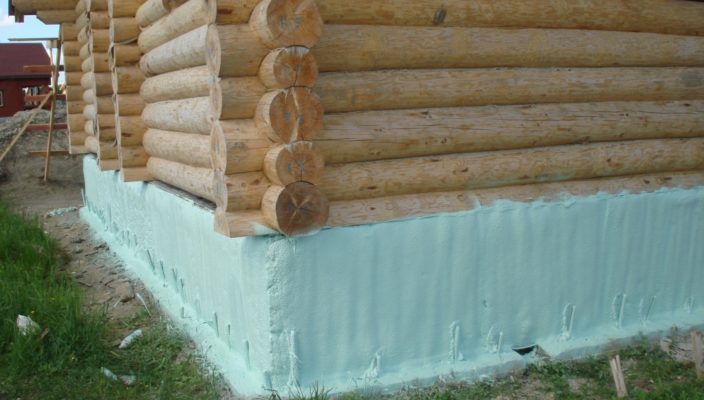
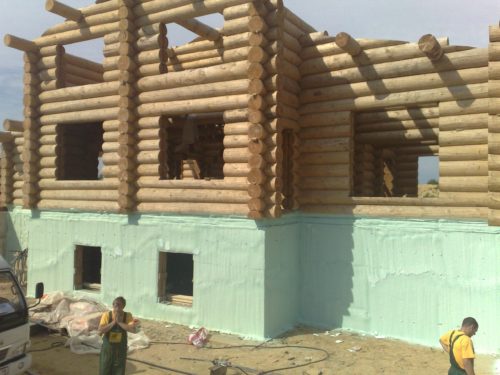
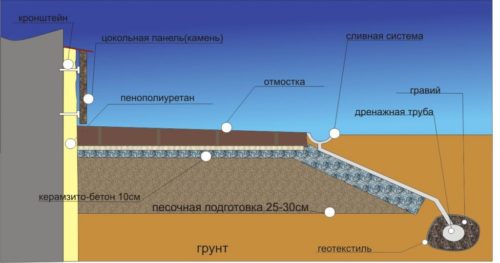
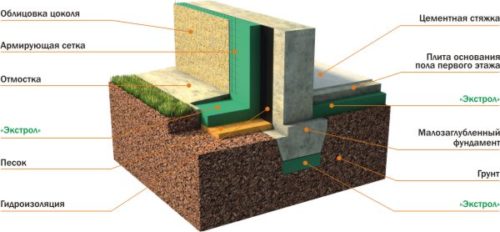
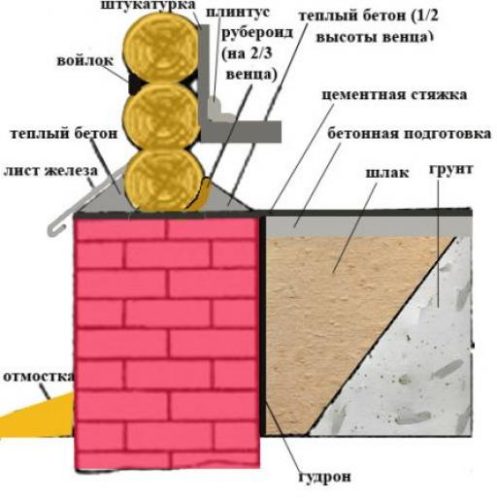


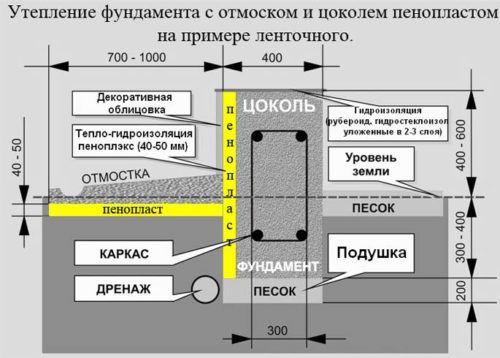

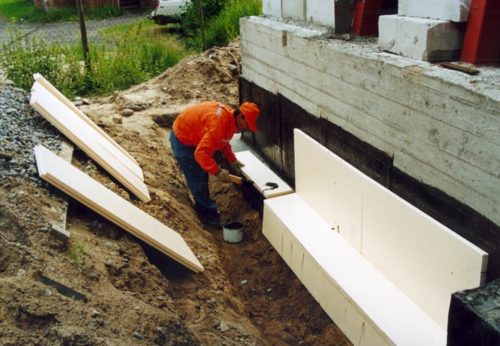
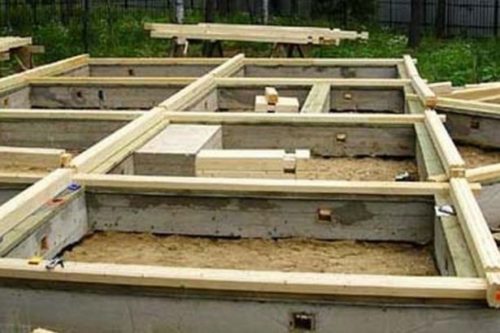
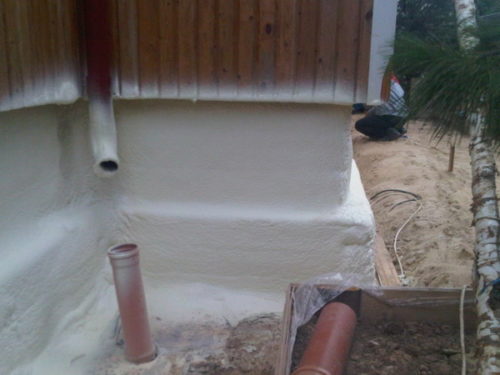


















Company Orlan https://orlansm.ru/ It will help you choose the desired concrete (solution) or crushed stone, sand for construction or your needs. Safe deal, payment after quality verification. Call 8 (800) 550-29-43.